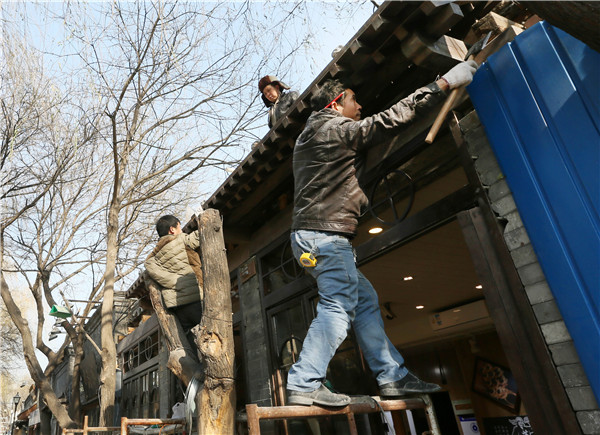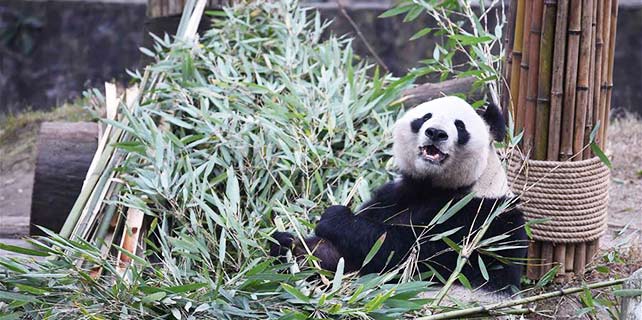Traditional hutong style to be restored
 |
|
Restoration work is underway in Beijing's Nanluoguxiang earlier this month. [Photo by Sun Yue/For China Daily] |
Beijing will restore 1,500 hutong-narrow alleyways-to their traditional style over the next four years, the city management commission announced on Wednesday.
Luo Hongyi, head of the city government's environmental construction planning division, said illegal stores built in hutong inside the Second Ring Road will be removed, as unapproved constructions have had a negative influence on the city's traditional style.
"We aim to restore the traditional feel of hutong by 2020," he said.
Over the past decade, many people have demolished walls of siheyuan-traditional courtyard residences-to build facades for barber shops, restaurants or stores, Luo said, adding that they often occupy narrow hutong, causing safety and sanitary concerns.
Hutong and siheyuan are considered tourist attractions for those interested in traditional Beijing culture. However, officials said tearing down walls without approval has been commonplace.
"We found more than 500 examples of such development in Dongsi subdistrict, which is about the size of the Forbidden City," said Ruan Jun, an official with Dongcheng district's city management division. "About 140 have been sealed since early August and restoration is underway."
Luo added that "there are at least 20 subdistricts within the Second Ring Road, and historians have been consulted to ascertain the target outlook of restoration work".
This is one key measure Beijing is taking to promote conservation and restoration of traditional architecture in the historical heart of the city. Other approaches include relocating electricity cables underground, as well as employing property management companies, according to Wu Yamei, deputy director of the city's environment construction office.
According to Beijing Youth Daily, the number of shops in Nanluoguxiang-an 800-meter-long hutong and tourist attraction known for its food and souvenir shops-has been cut by one-third to 154.
A detailed guidance on standards, including layout, height, outlook and material, has been released to regulate the architectural style of the area.
Liang Shuang contributed to this story.









